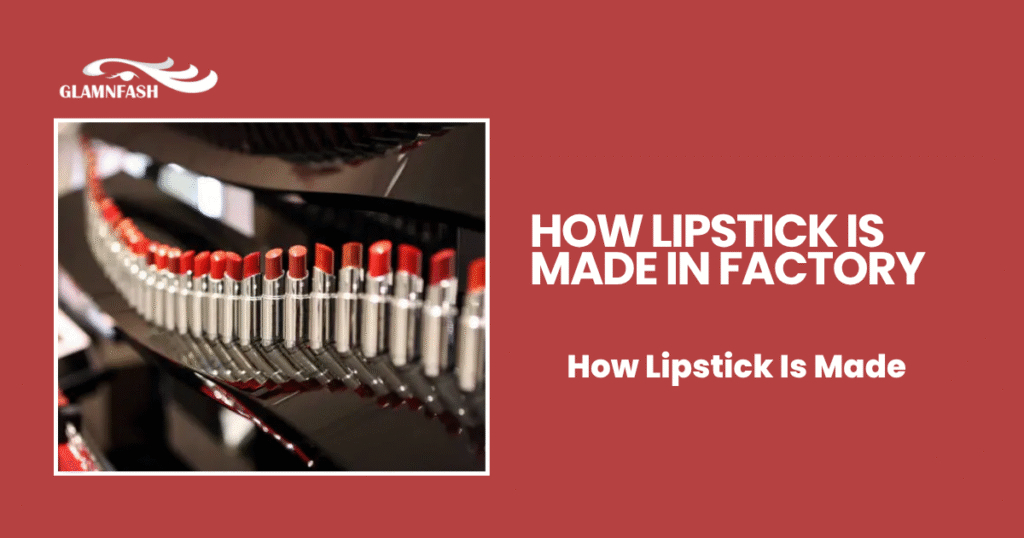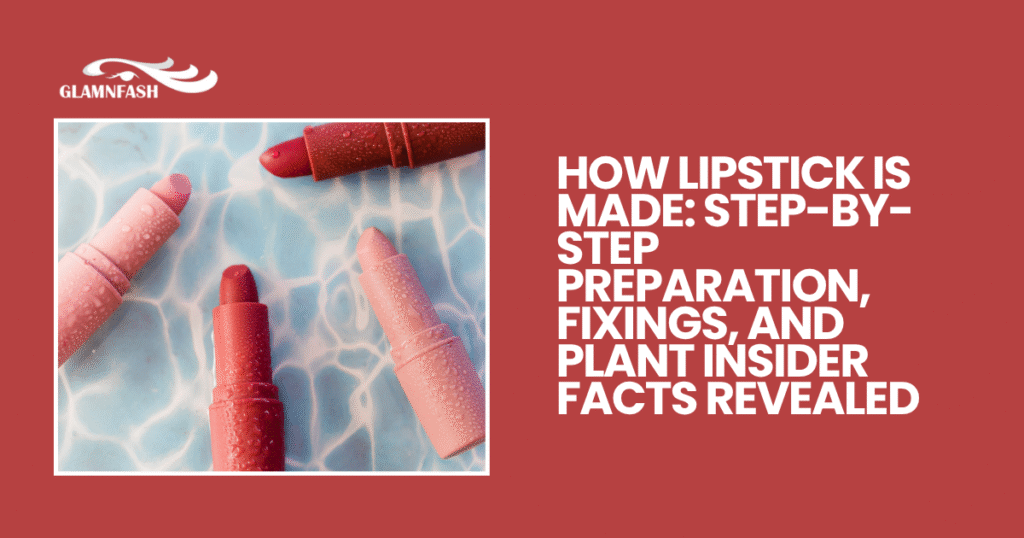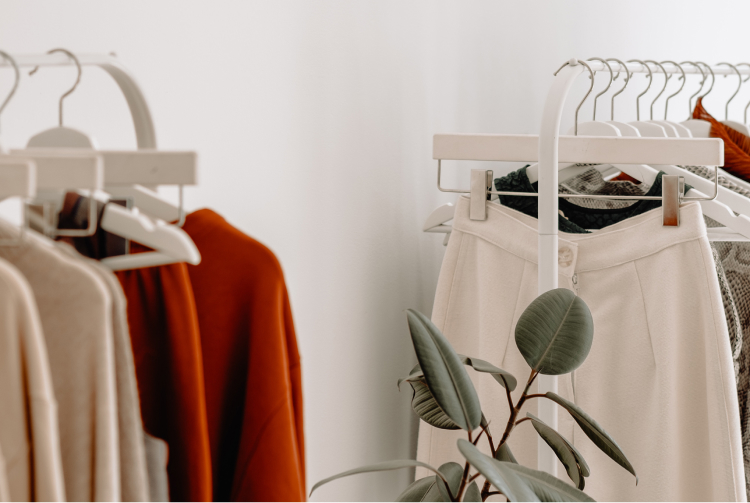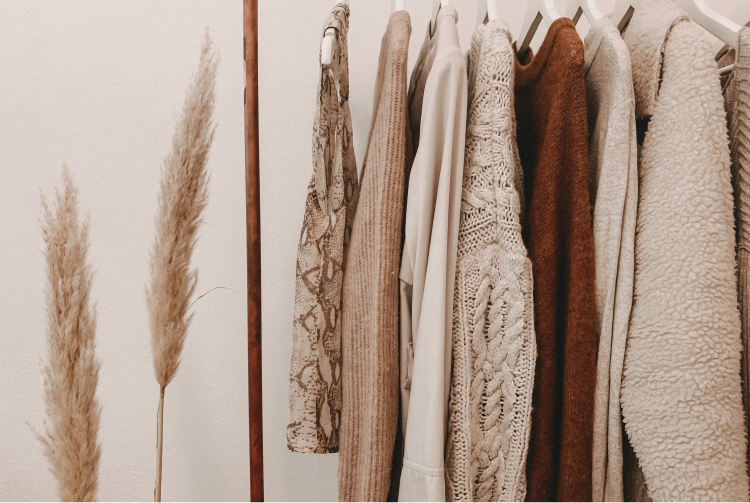How Lipstick Is Made
Camo is further than a fair color for your lips; it’s artificer, chemical, and artificer in one modest tube. But have you ever pondered how camo is made? From softening waxes and blending colors to molding and bundling, each step brings magnificence and science together. For bold and edgy choices like black lipstick, check out our guide on Black Lipstick: A Bold and Edgy Beauty Trend .
In this direct, we’ll investigate how lipstick is made step by step, what fixings go into it, and how production lines turn basic materials into excellent lip shades. You’ll moreover learn if lipstick is made from creatures, what carmine lipstick implies, and how you can indeed make lipstick at home.
Let’s plunge into the colorful world behind each lipstick bullet!
The Captivating History of Lipstick
Lipstick has a long, wonderful story. It started thousands of a long ago in ancient Egypt and Mesopotamia, where both men and women utilized smashed gemstones and characteristic colors to color their lips. Cleopatra broadly utilized crushed carmine insects to make her ruddy lipstick shade.
In India, characteristic colors from turmeric, beetroot, and blooms were utilized for lip color. Over time, lipstick became an image of excellence, certainty, and self-expression.
By the 20th century, industrial facilities started mass-producing lipsticks with advanced machines and fixings. Nowadays, innovation and maintainability make the prepare quicker, cleaner, and more imaginative than ever before.
Understanding the Wisdom Behind Camo
Camo might feel introductory, but it’s really a capstone of chemistry. It must float fluently, remain firm in the tube, and give dynamic color.
Every lipstick has three primary parts:
- Waxes: give structure and firmness.
- Oils: provide shine and moisture.
- Pigments: give color and vibrancy.
Add to this a few emollients, additives, and scents, and you get that plush, culminate lipstick you adore. The blend of these fixings determines if the wrap up is matte, reflexive, or creamy.
Constituents employed in Lipstick
Camo is made from precisely chosen seasoning that makes it long-lasting, secure, and awful.
Let’s break down what goes interior your favorite shade.
Base Ingredients: Waxes and Oils
Waxes form the solid base of lipstick. Common types include:
- Beeswax: provides smooth texture and shine.
- Carnauba wax, from the palm tree, provides firmness.
- Candelilla wax, from plants, gives a gleaming finish.
Oils make the lipstick soft and easy to apply. These can be:
- Castor oil: gives rich shine.
- Mineral oil: keeps lips hydrated.
- Lanolin: helps blend pigments evenly.
Pigments and Colorants
The color in lipstick comes from colors. These can be common, mineral-grounded, or synthetic.
The most famed shade is carmine, which comes from smashed cochineal creepy crawlies.
It’s regularly utilized in ruddy lipsticks for its profound, enduring color.
This brings up a common question: Is lipstick made from creatures? Not all lipsticks are. Numerous brands presently utilize veggie lover colors and plant-based colorants instead.
Additives and Enhancers
Lipsticks also include:
- Emollients for smoothness.
- Cancer prevention agents to anticipate spoilage.
- Fragrances for a charming scent.
These little augmentations make a huge contrast in surface, feel, and rack life.
How Lipstick Is Made Step by Step
Here’s where the magic happens: the full process of how lipstick is made in factories and labs around the world.
Step 1: Planning the Base
- The to begin with step begins by dissolving the waxes and oils in a steam-jacketed pot. The waxes dissolve gradually, whereas the oils mix in to make a smooth, reliable mixture.
- The temperature is carefully controlled so that the base doesn’t burn or separate.
- Large factories use automated lipstick manufacturing machines that keep the mix warm and stir it evenly.
Step 2: Including Shades and Additives
- Once the base is prepared, it’s time to include pigments.
- The color powders are ground finely and blended into the dissolved base utilizing a triple roll process. This guarantees indeed scattering and gives a wealthy, reliable shade.
- Scent, emollients, and other little fixings are included in this organization for surface and scent.
Step 3: Molding and Cooling
- The warm, colorful fluid is at that point poured into metal molds molded like lipstick bullets.
- The molds are cooled in a refrigeration unit or cooling chamber so the lipstick cements into shape.
- This step is vital for giving the lipstick its smooth, culminate form.
Step 4: Fire Treatment and Finishing
- Once cooled, the lipsticks are tenderly passed beneath a flame.
- This evacuates any surface flaws, discoloration, and gives a gleaming shine.
- Each lipstick bullet is at that point checked for quality color, surface, and wrap-up must be perfect.
Step 5: Bundling and Branding
- The wrapped up lipstick is set into its tube or case, labeled, and packaged.
- High-end brands like MAC or Lakme utilize custom molds, metallic cases, and nitty-gritty branding to make each item unique.
- At long last, they went through quality control recently, hitting store shelves.
- That’s the full lipstick fabricating handle stream from base softening to lovely packaging.
- For a detailed overview of how lipstick is produced and the history behind it, see How It’s Made Lipstick .
How Lipstick Is Made in Factory

In a production line setting, lipstick making is quick, mechanized, and precise.
Machines handle softening, blending, molding, and cooling beneath sterile conditions.
- Raw materials are measured and stacked into kettles.
- Automatic blenders mix ingredients to keep up a uniform surface.
- Pumps transfer melted material to molds.
- Cooling conveyors solidify lipsticks within minutes.
- Robotic arms package them for distribution.
A lipstick manufacturing process flow chart shows this journey from raw ingredients to finished product. Industrial facilities follow strict security and cleanliness rules to keep everything clean and consistent.
How Lipstick Is Made at Home
Want to make your claim lipstick? It’s simpler than you think! Here’s how lipstick is made domestically, utilizing characteristic ingredients:
You’ll need:
- 1 teaspoon beeswax
- 1 teaspoon shea butter
- 1 teaspoon coconut oil
- Natural shade(like beetroot powder or cocoa)
Steps:
- Melt beeswax, shea butter, and coconut oil in a little pot.
- Stir until the blend is smooth.
- Add your color and blend well.
- Pour into a little holder or mold.
- Let it cool for 1 hour your lipstick is ready!
This is “how lipstick is made easy,” idealized for DIY significant others who incline toward natural, toxin-free excellence products.
Is Lipstick Made from Animals?
This is one of the most common questions approximately lipstick.
A few lipsticks utilize fixings that come from animals, such as:
- Beeswax (from honeycombs)
- Lanolin (from sheep’s wool)
- Carmine shade(from cochineal insects)
But don’t stress, numerous present-day brands are presently vegetarian and cruelty-free.
Instead of carmine, they utilize manufactured ruddy colors or plant-based options. See for names that say PETA-certified or vegan-friendly if you need animal-free options.
Modern Developments in Lipstick Manufacturing
Lipstick fabricating has come a long way, much appreciated to innovation and innovation.
Today’s lipsticks are more intelligent, more secure, and more sustainable.
- Liquid lipsticks utilize progressed emulsion equations for longer wear.
- Matte wraps up are made with silica and uncommon film-forming agents.
- Eco-friendly bundling decreases plastic waste.
- Some brands utilize AI innovation to test shades and surfaces virtually.
So, if you’ve ever pondered “how fluid lipstick is made,” it’s all approximately adjusting oils, shades, and polymers that dry easily on your lips.
Lipstick Fabricating in India
India is one of the biggest makers of beauty care products, and camo plays a colossal part.
Brands like Lakme, Colorbar, and Sugar Makeup manufacture millions of powders each time.
That’s how camo is made in India.
- Raw accouterments are sourced locally and internationally.
- Indian manufacturing shops follow BIS( Bureau of Indian Standards) guidelines.
- Traditional tones and homegrown seasoning are constantly employed for characteristic composites.
The Make in India activity has moreover made a significant difference in boosting local lipstick production and exports.
Lipstick Fabricating Handle PDF & Stream Chart
Manufacturers frequently make point-by-point PDF manuals or stream charts that appear each organize lipstick production.
These include:
- Ingredient preparation
- Mixing and heating
- Molding and cooling
- Packaging and quality testing
These records are utilized for investigation, preparation, and production line audits.
Common Lipstick Sorts and How They’re Made
Lipsticks come in numerous sorts, and each one is made slightly differently.
Matte Lipstick
Matte lipsticks have less oil and more color. This gives them a striking, non-shiny wrap-up that keeps going longer.
Creamy or Shiny Lipstick
These contain more oils and emollients, giving them a smooth surface and a gleaming look.
Liquid Lipstick
Liquid lipsticks are emulsions; they begin as a fluid and dry to a matte film after application.
Branded and Extravagant Lipsticks
Luxury brands like MAC, Dior, and Lakme refine their equations with superior colors, smoother wraps, and exquisite packaging.
Quality Control and Security in Lipstick Manufacturing
Every lipstick must pass strict quality checks some time recently, when it comes to you.
Factories test for:
- Color accuracy
- Texture consistency
- Allergen safety
- Shelf life
In nations like India and the U.S., items must follow BIS and FDA controls to guarantee security and hygiene.
Sustainability and Moral Lipstick Production
The excellence industry is getting greener.
Present-day brands are supplanting animal-based and manufactured ingredients with:
- Plant waxes
- Mineral pigments
- Recyclable packaging
Many brands presently offer cruelty-free, veggie lover, and eco-friendly lipstick lines. Choosing these makes a difference to the planet and underpins dependable beauty care products production.
Step-by-Step Outline: How Lipstick Is Made
Let’s recap the preparation quickly:
- Melt waxes and oils to frame the base.
- Mix in colors, emollients, and fragrances.
- Pour the fluid into molds.
- Cool until solid.
- Flame-finish for shine.
- Package and label.
That’s how lipstick is made, step by step, a blend of craftsmanship, chemistry, and magnificence magic.
Conclusion
In conclusion, learning how lipstick is made helps us appreciate the detailed process behind this everyday beauty essential. From selecting premium waxes, oils, and pigments to blending them at precise temperatures, every step plays a vital role in achieving the perfect texture, color, and shine.
The manufacturing process also emphasizes safety and quality. Each batch of lipstick undergoes strict testing to ensure it is smooth, long-lasting, and skin-friendly. This careful attention to formulation and hygiene guarantees that every product meets high cosmetic standards before reaching store shelves.
Ultimately, understanding how lipstick is made allows us to value the craftsmanship and innovation behind each tube. It’s not just makeup it’s a blend of science, creativity, and passion that empowers people to express their individuality with confidence.
FAQs
How is camo made step by step?
Camo is made by softening waxes and canvases, blending tones, pouring into molds, cooling, honey-finishing, and packaging.
Is camo veg or non-veg?
Many powders use beast constituents like beeswax or carmine. Veggie nut brands use factory or manufactured druthers
What’s camo really made of?
It’s made of waxes, canvases, tones, emollients, and scent.
Which creepy crawly is employed in camo?
The cochineal creepy crawly is employed to make carmine, a natural red color t up in multitudinous powders.
How is it made?
Ruddy lipstick employments carmine or manufactured ruddy colors blended with wax and oils to make a rich color and a smooth surface.



